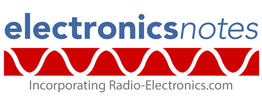Home » Component data » Diode (Schottky) data » this page
STPSC20H12D Schottky Diode Data
Data for the STPSC10H12D 1200V 20A SiC Schottky diode including electrical parameters, performance, features, outline, package type etc.
The SiC diode, available in TO-220AC, D²PAK and TO-247 LL, is an ultrahigh performance power Schottky rectifier. The most popular package appears to be the TO220.
It is manufactured using a silicon carbide substrate. The wide band-gap material allows the design of a low VF Schottky diode structure with a 1200 V rating.
Owing to the Schottky construction, no recovery is shown at turn-off and ringing patterns are negligible. The minimal capacitive turn-off behavior is independent of temperature.
Key details and datasheet performance parameters for the STPSC20H12D diode.
| STPSC20H12D diode datasheet parameters & data |
|
|---|---|
| Parameters | Details |
| Diode type | 1200 V, 20 A, silicon carbide power Schottky diode |
| Package type | DPAK (TO263), TO220, DO247 |
| Repetitive peak reverse voltage, VRRM | 1200V |
| Working peak reverse voltage, VRWM | 1200V |
| DC blocking voltage, VR | 1200V |
| RMS forward continuous current, IF(RMS) | 38A |
| Average rectified current, IF(AV) | 20A @155°C in TO220 and DPAK 20A @150°C |
| Repetitive peak forward current, IFRM | 78A with TJ 175°C in TO220 & DPAK 78A with TJ 175°C in DO247 |
| Non-repetitive forward surge current, IFSM | 140A @25°C with 10ms sinusoid 120A @ 150°C with 10ms sinusoid 700A @25°C with 10µs square pulse |
| Junction temperature (°C) | 175 |
| Forward voltage VF | 1.35V typ 1.5V max @ 20A & TJ 25°C 1.75V typ 2.25V max @ 10A & TJ 150°C |
| Reverse leakage IR | 10µA typ 120µA max @ TJ 25°C 60µA typ 800µA max @ TJ 150°C |
| Primary manufacturer | ST Microelectronics |
Outline & pinout:
Explanation of major diode parameters
| Parameter | Explanation |
|---|---|
| Repetitive peak reverse voltage, VRRM | This is the maximum value of the short period peak reverse voltage that can be sustained. |
| Working peak reverse voltage, VRWM | This is the maximum value of the continuous reverse voltage that can be applied to the diode. |
| DC blocking voltage, VR | This is the maximum reverse DC voltage that should be applied across the diode. |
| RMS reverse voltage, VR(RMS) | As many AC waveforms are quoted in RMS, this is the maximum reverse voltage that can be sustained where the voltage is expressed in terms of its RMS value. |
| Forward continuous current, IF | This is the maximum forward current that can be sustained by the diode. |
| Average rectified current, IF | This is the maximum average current value that can be handled by the diode. The parameter often states the load as this will affect the operation of the diode. |
| Non-repetitive forward surge current, IFSM | This is the maximum surge current that can be handled - it should only be present for a short time. |
| Parameter | Explanation |
|---|---|
| Power dissipation, PTOT | The maximum power dissipation that can be sustained within the device. |
| Junction temperature (°C) | This is the maximum temperature of the PN junction that can be sustained. Remember that the junction temperature can be much higher than the ambient temperature of the equipment. |
| Forward voltage VF | This parameter gives the forward voltage drop for a particular current passed through the diode. |
| Breakdown voltage VBR | This is the minimum voltage at which the diode may breakdown. If the current is not limited it will lead to the destruction of the device. |
| Leakage current IR | This is the current that flows under stated conditions when the diode is reverse biassed. |
| Diode capacitance CD | The diode capacitance, CD may also be referred to as the junction capacitance, CJ. All diodes have a certain capacitance across the PN junction. The value will be stated for a given reverse voltage. |
| Reverse recovery time | If a diode is initially driven in forward bias, and the polarity suddenly switches to reverse bias, the diode will still remain conducting for some time. The reverse recovery time is the time required for conduction to settle into the reverse bias state. |
These are the main operational amplifier parameters that have been included in our list. There are others, but these help quantify the main elements of the performance of the regulator, but are normally deemed to be less important.
Please note, that the data given is the best estimate we can give within a tabulated summary of this nature. Parameters also vary between manufacturers. Electronics Notes cannot accept any responsibility for errors, inaccuracies, etc, although we do endevaour to ensure the data is as accurate as possible.
Notes and supplementary information
• Availability & sources
The STPSC20H12D is available from a number of stockists and electronic component distributors many of which are given in the table below.
STPSC20H12D Component Distributor, Stock and Pricing
• Further details
The STPSC20H12D silicon carbide Schottky diode is aimed at being used in a large variety of circuits including EV charging stations, solar inverters, servers, DC-DC converters and power factor control, uninterruptible power supplies, telecom / server power equipment, air conditioning although there will be many other circuit designs for which it is ideal.
 Written by Ian Poole .
Written by Ian Poole .
Experienced electronics engineer and author.
Return to Component Data menu . . .



